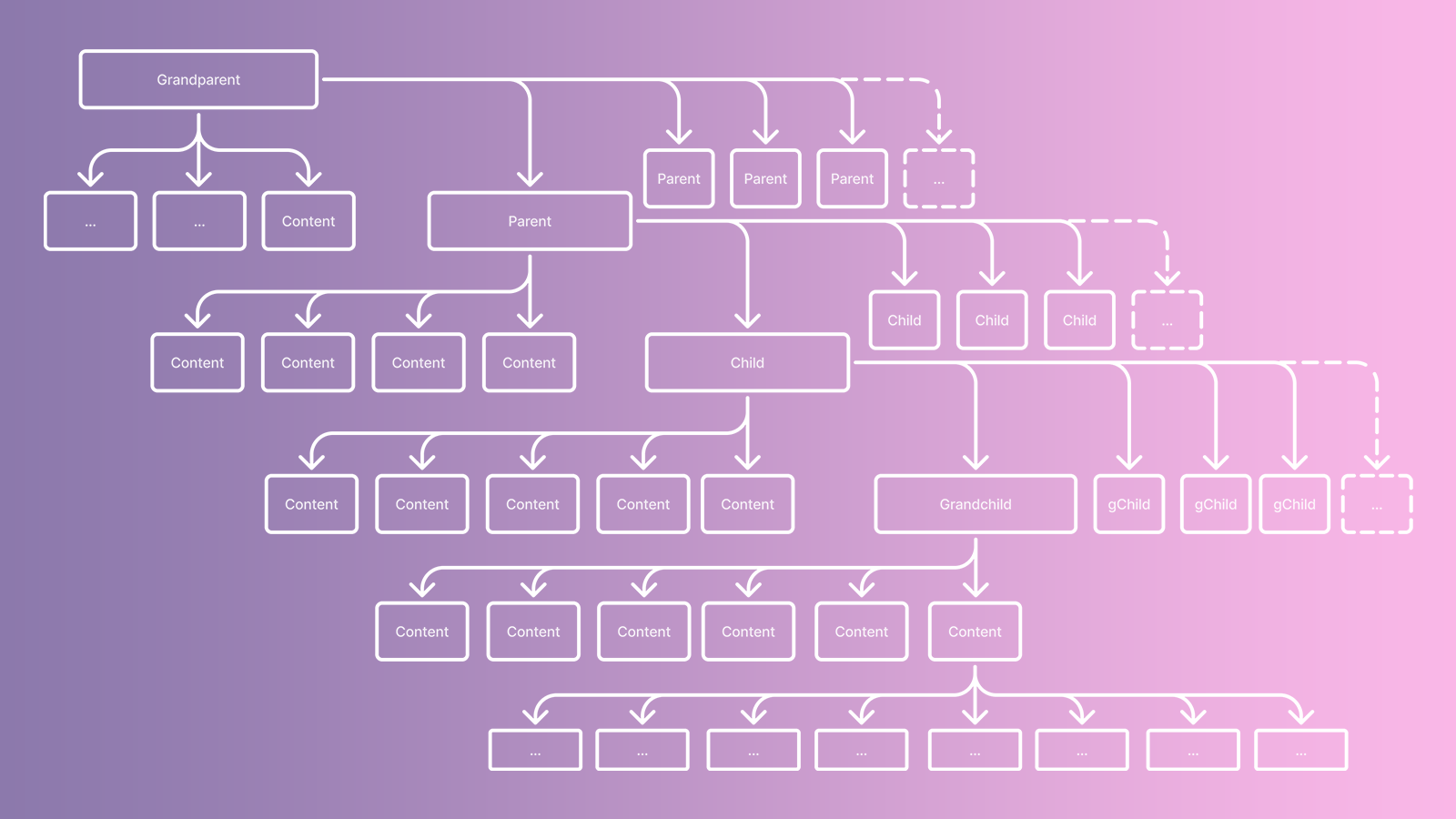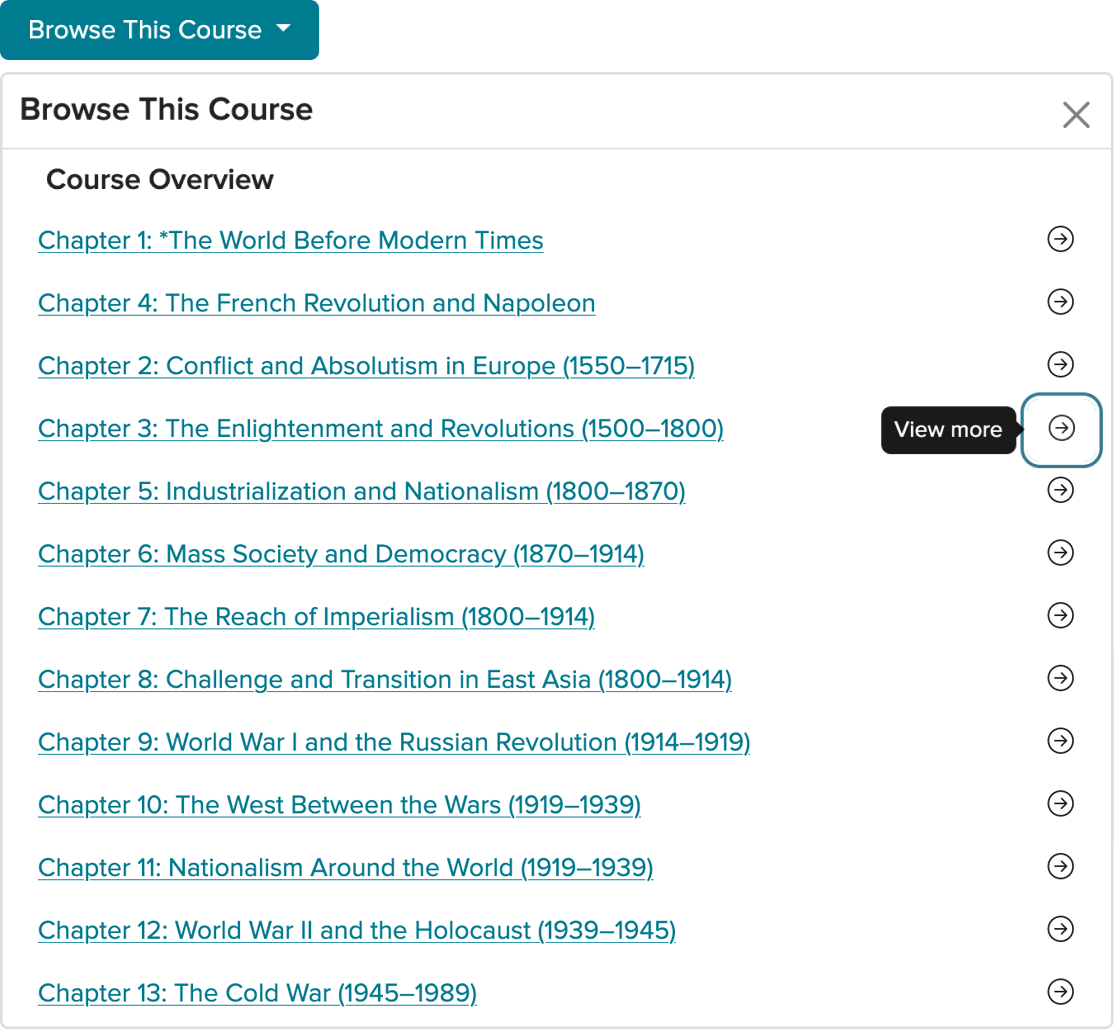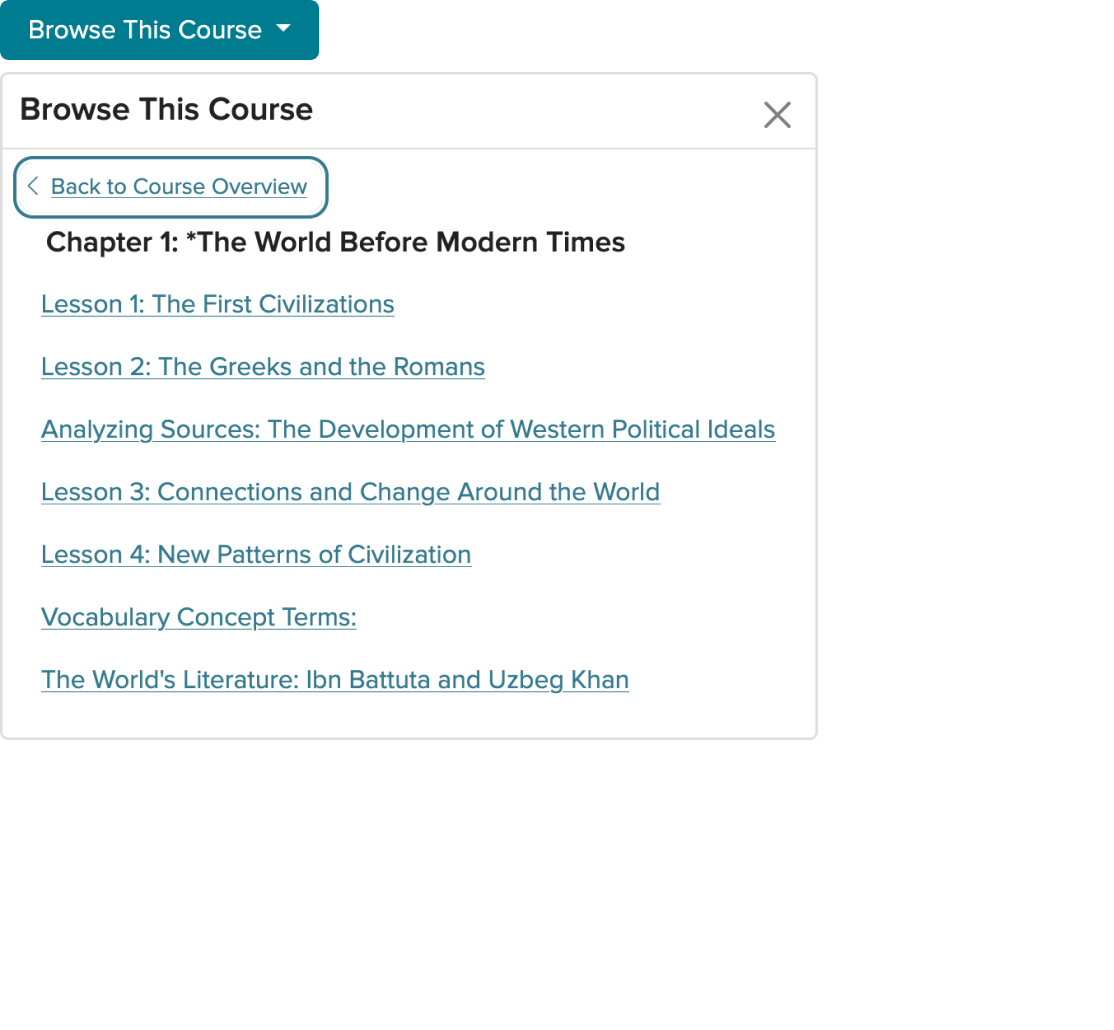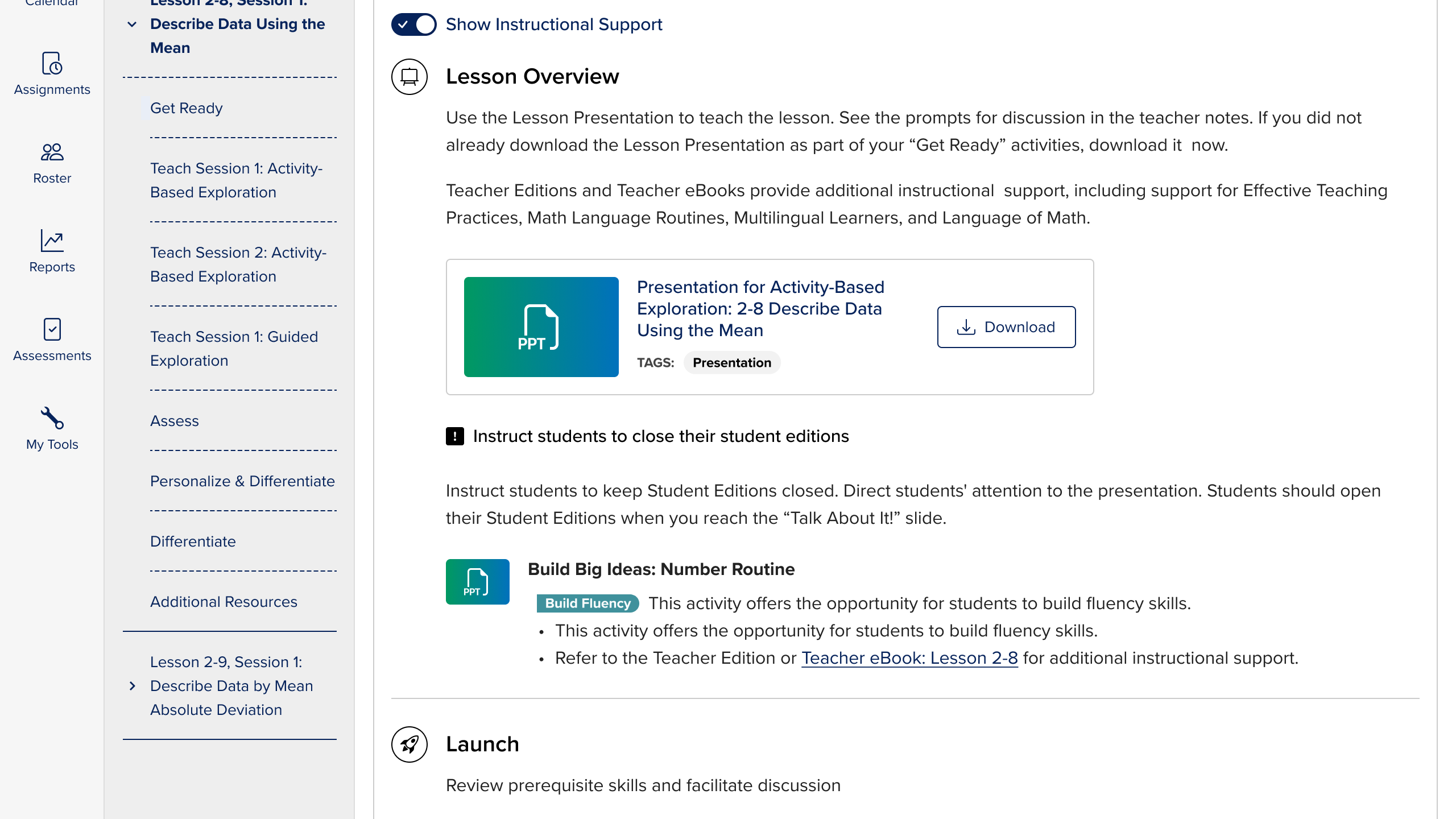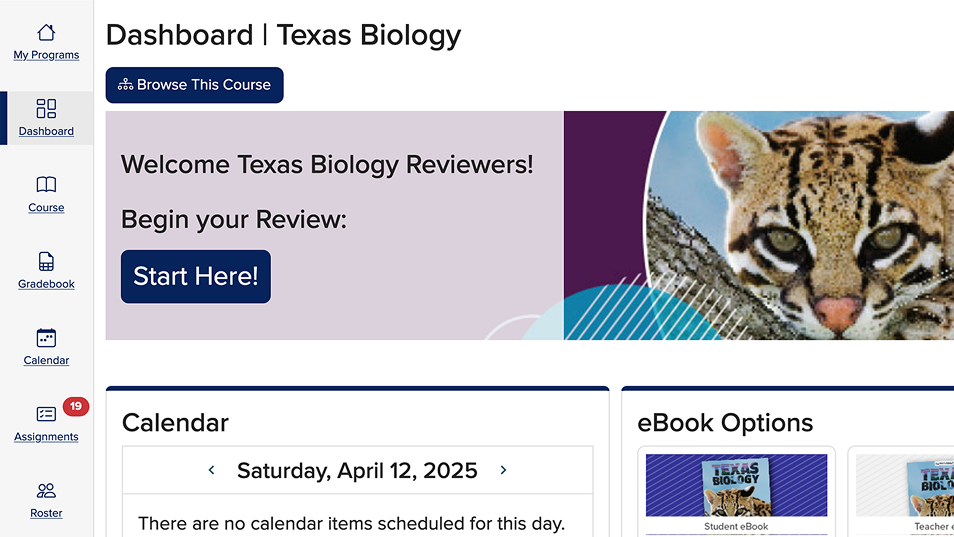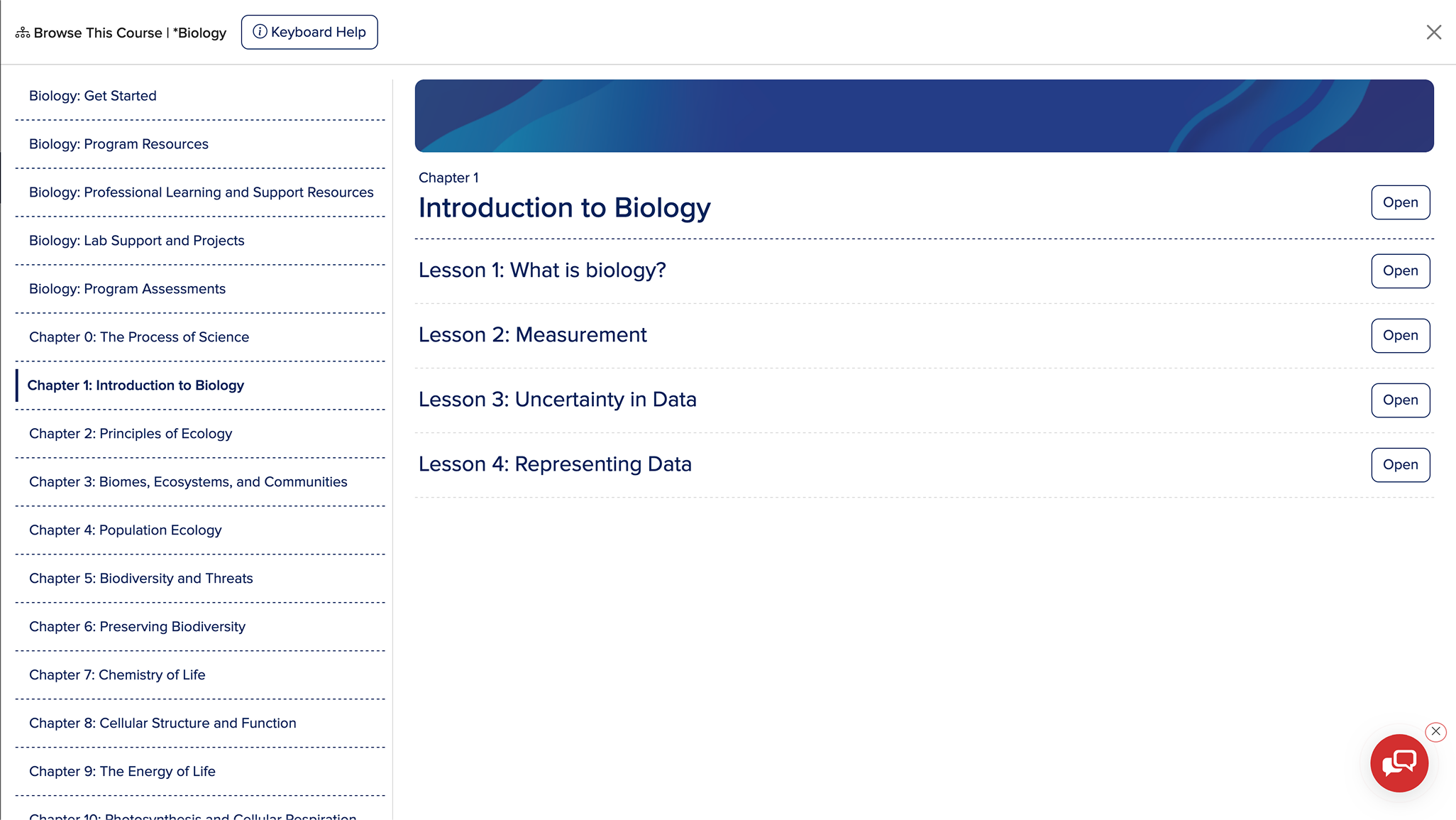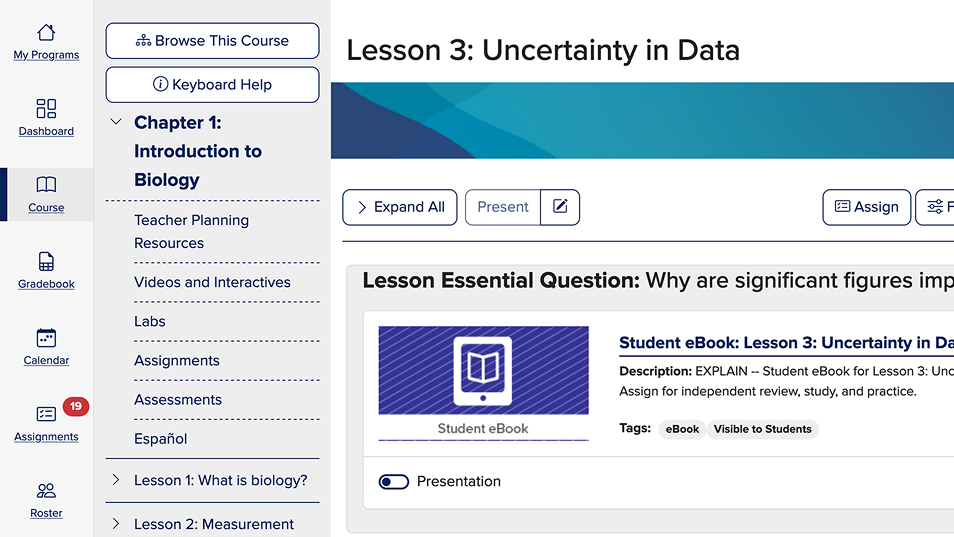The mission was to make content discovery frictionless so that educators, whether
teaching virtually or
live and in-person, could swiftly find the exact resource they need. For reviewers we asked how
might we give a 30,ooo f
oot view of each product's content easily and quickly. In order to solve this, we needed to
understand exactly how teachers,
and administrators, were currently navigating and using the platform.
Content Mapping
We deeply analyzed the existing content structures and user flows for
content discovery regardless of role.
The “Russian Nesting Doll” nature of the hierarchy routinely forced users to click through multiple
levels without ever seeing a single
piece of content. For teachers it was highly cumbersome and disrupted their flow while reviewers had
a hard time sim ply discerning what is
contained within the curriculum.
The difference between a teacher and an administrator, in my opinion anyway, was a "show me what you
have" vs "I know what
I want from you" customer experience. One knows exactly what they're looking for. The other just
wants to see if you have the thing they want.
The existing navigation required too many steps to access content, with hidden,
non-scannable structures that slowed
teachers during live instruction. This revealed a need for a more intuitive, at-a-glance navigation
model.
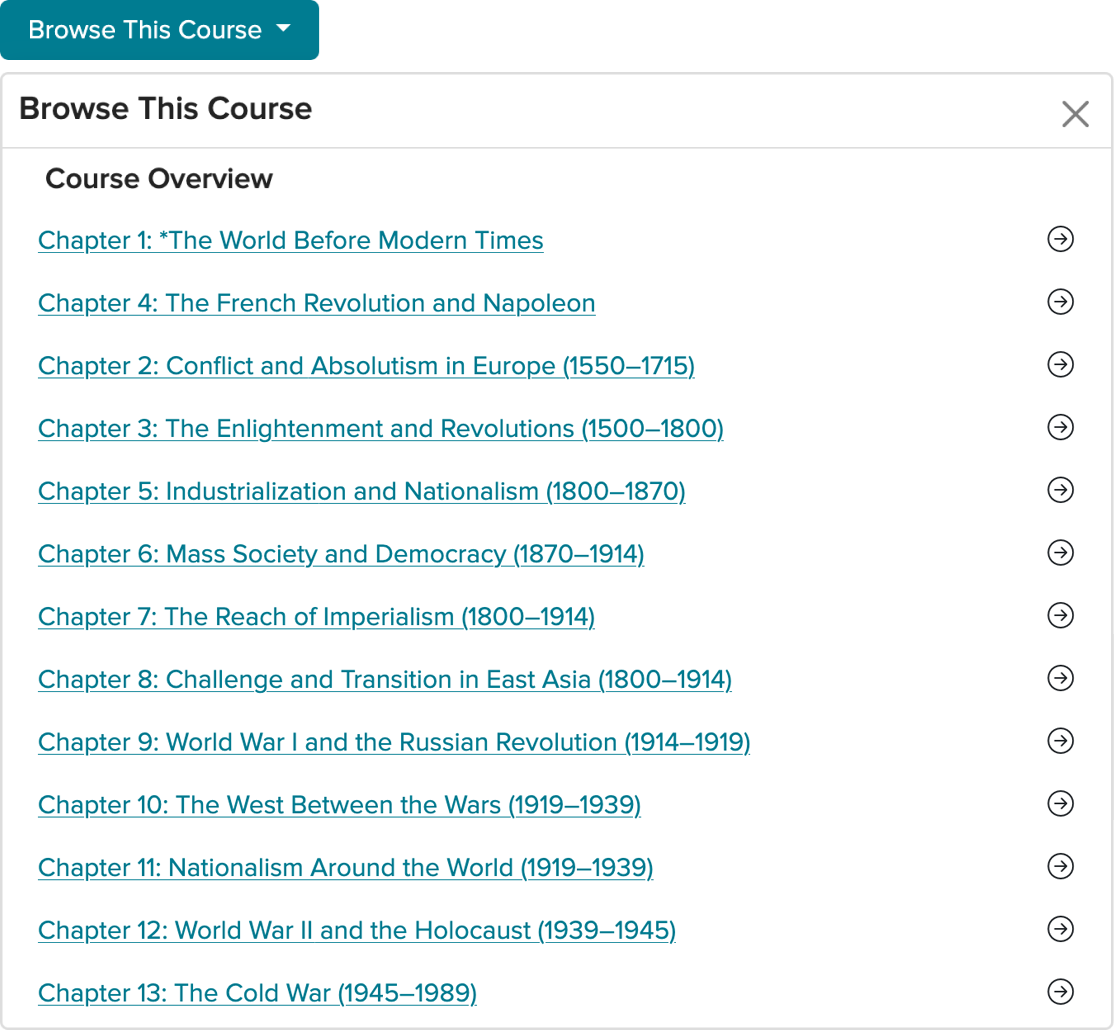
Within the product, to access the tree hierarchy of the course, teachers had to first click "Browse
This Course" to expose the content structure.
Designing Seamless Navigation for Classroom Workflows
Considering these findings, I introduced the idea of a persistent left-hand
panel containing the course content. A full-page TOC overlay was also introduced as a higher-level
view; enabling quick scanning, expanding/collapsing sections, and jumping anywhere in the course.
These updates were designed to reduced friction and help both teachers and administrators find what
they needed faster. All without losing their current location within the platform.
Administrators at the state level can, within one screen, see all the educational content in context.
